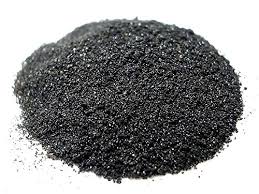Overview of SHS chromium carbide overlay plate
Chromium Carbide (Cr3C2) is a hard, wear-resistant ceramic compound consisting of chromium and carbon atoms. It is a metallic carbide known for its exceptional hardness, high melting point, and excellent corrosion resistance. Chromium carbide is widely utilized in applications where resistance to wear, corrosion, and high temperatures is crucial, making it a vital component in various industrial sectors.
Features of SHS chromium carbide overlay plate
-
High Hardness and Wear Resistance: Chromium carbide has a Vickers hardness of around 1300 Hv, which is significantly higher than most steel alloys, providing excellent resistance to abrasion and wear.
-
High Melting Point: With a melting point exceeding 1890°C, it can maintain its structural integrity and properties in extremely high-temperature environments.
-
Corrosion Resistance: Forms a passive chromium oxide layer when exposed to oxygen, providing inherent corrosion resistance, particularly against oxidation and acidic environments.
-
Thermal Stability: Exhibits good stability at high temperatures, making it suitable for use in high-temperature applications such as heat exchangers and furnace components.
-
Chemical Resistance: Resistant to many chemicals, including acids, except for strong oxidizers like nitric acid.
-
Bonding Enhancer: When added to metal matrix composites or as a coating, it can enhance bonding between the substrate and other materials.

(SHS chromium carbide overlay plate)
Parameters of SHS chromium carbide overlay plate
The CH3CH2CH2CH3CH2Cl is an industrial compound that contains a carbon-chlorine bond, and it is commonly used in the production of dibutylamine (DIB) for the production of adhesives, coatings, and other chemicals.
When used as an overlay plate, it is typically applied to the surface of a substrate material such as metal or plastic in order to create a protective layer that adheres to the surface and prevents scratching, etching, or wear. The thickness of the overlay plate can vary depending on the specific application and the type of substrate being coated, but it should be no more than 0.5-1 mm.
There are several parameters that may affect the performance of a Chromium carbide overlay plate:
* Substrate material: The choice of substrate material will impact the rate at which the overlay plate can form a strong bond with the surface.
* Layer thickness: The thickness of the overlay plate can affect the bond strength between the layer and the substrate, so selecting a thickness that provides a balance between bond strength and wear resistance is important.
* Material properties: The composition and quality of the Chromium carbide overlay plate itself can also affect its performance. For example, the presence of impurities or defects in the coating can reduce bond strength or introduce corrosion.
* Application conditions: The temperature, humidity, and exposure to environmental factors can all impact the performance of the Chromium carbide overlay plate, so selecting appropriate conditions for use can help ensure optimal bonding.
Overall, the effectiveness of a Chromium carbide overlay plate will depend on a combination of substrate material, layer thickness, material properties, and application conditions. To optimize the performance of this overlay plate, it is recommended to carefully consider these factors and conduct thorough testing and optimization studies.

(SHS chromium carbide overlay plate)
Applications of SHS chromium carbide overlay plate
-
Hardfacing and Surfacing: Used as a welding overlay or thermal spray coating to protect surfaces against wear and corrosion in mining equipment, oil and gas drilling tools, and construction machinery.
-
Cemented Carbides: As a component in tungsten carbide-cobalt hardmetal compositions to improve wear resistance and toughness.
-
Thermal Spray Coatings: For high-temperature corrosion and wear protection in boiler tubes, furnace parts, and heat exchanger components.
-
Valves and Pumps: Components in pumps and valves that handle abrasive slurries or corrosive liquids due to its wear and corrosion-resistant properties.
-
Metal Cutting Tools: Added to cutting tool materials to increase their hardness and wear resistance, extending tool life.
-
Aerospace Industry: In high-temperature and high-stress applications such as turbine engine components.
Company Profile
MyCarbides is a trusted global chemical material supplier & manufacturer with over 12-year-experience in providing super high-quality carbides and relative products.
The company has a professional technical department and Quality Supervision Department, a well-equipped laboratory, and equipped with advanced testing equipment and after-sales customer service center.
If you are looking for high-quality carbide materials and relative products, please feel free to contact us or click on the needed products to send an inquiry.
Payment Methods
L/C, T/T, Western Union, Paypal, Credit Card etc.
Shipment
It could be shipped by sea, by air, or by reveal ASAP as soon as repayment receipt.
FAQs of SHS chromium carbide overlay plate
Q: How is SHS chromium carbide overlay plate applied as a coating?
A: SHS chromium carbide overlay plate coatings are typically applied through thermal spraying, HVOF (High-Velocity Oxygen Fuel), plasma spraying, or hardfacing welding processes onto the substrate material.
Q: Is SHS chromium carbide overlay plate toxic?
A: In its solid form, chromium carbide is generally safe to handle. However, during certain manufacturing processes like grinding or welding, chromium compounds may become airborne and pose health risks if inhaled, requiring appropriate safety measures.
Q: How does SHS chromium carbide overlay plate compare to tungsten carbide in terms of hardness?
A: Tungsten carbide (WC) is generally harder than chromium carbide, with a Vickers hardness around 1600-1800 Hv, making WC more suitable for applications requiring extreme wear resistance.
Q: Can SHS chromium carbide overlay plate be used in food processing equipment?
A: Yes, chromium carbide coatings are sometimes applied to food processing equipment that requires high wear resistance and corrosion protection, but the coatings must comply with food safety regulations.
Q: What is the main advantage of using SHS chromium carbide overlay plate in hardfacing applications?
A: The primary advantage is its ability to significantly enhance the surface hardness and wear resistance of base materials, prolonging equipment life and reducing maintenance costs in abrasive environments.

(SHS chromium carbide overlay plate)





